Vistome

Every day we decide how to dress. Our clothing identifies us, every garment we select speaks to the image we want to project to others and ourselves.
For some women, dressing involves putting on a strait jacket that is difficult to remove, a uniform within their social prison which has strict rules of behavior. For others, dressing involves from a shell, learning to fly through the sky where fancy takes us.
How we dress explains how we see ourselves and think others see us. Dressing is a way of communing with the body that shapes our behavior, revealing our personality traits, our past, and the future we imagine or aspire to.
Dressing expands our skin so that it can touch the universe.
I would like you to write about your emotions and thoughts as you get dressed, reflecting on this everyday act which is no less important because it is common. Please write an essay, poem or story from which I will create a dress to add to a collection. When it is over, the dress will be yours.
This project includes thirteen female writers from Mexico in an interdisciplinary venture to transfer words to cloth and objects.
Thank you for participating.
Miriam Medrez

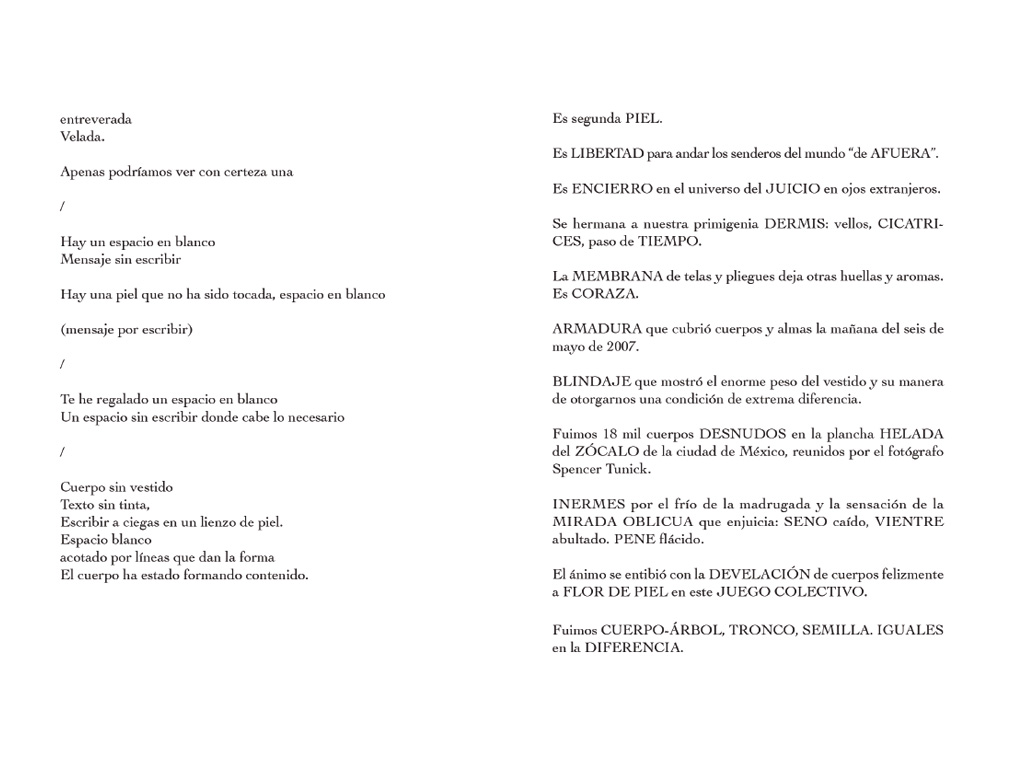


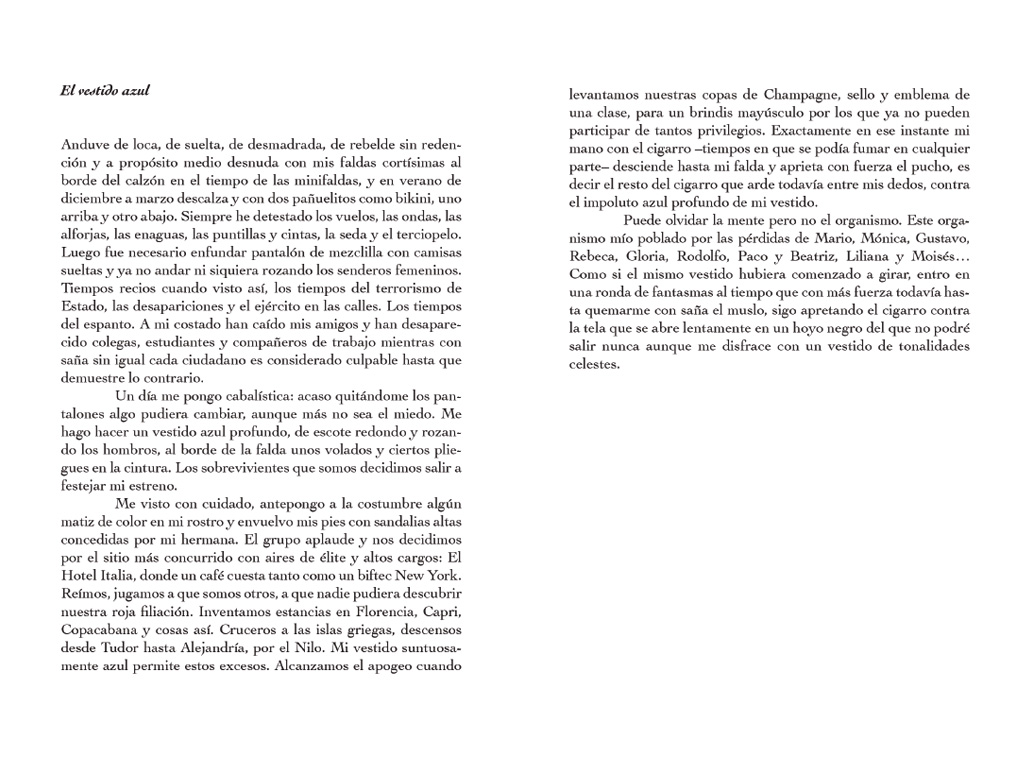


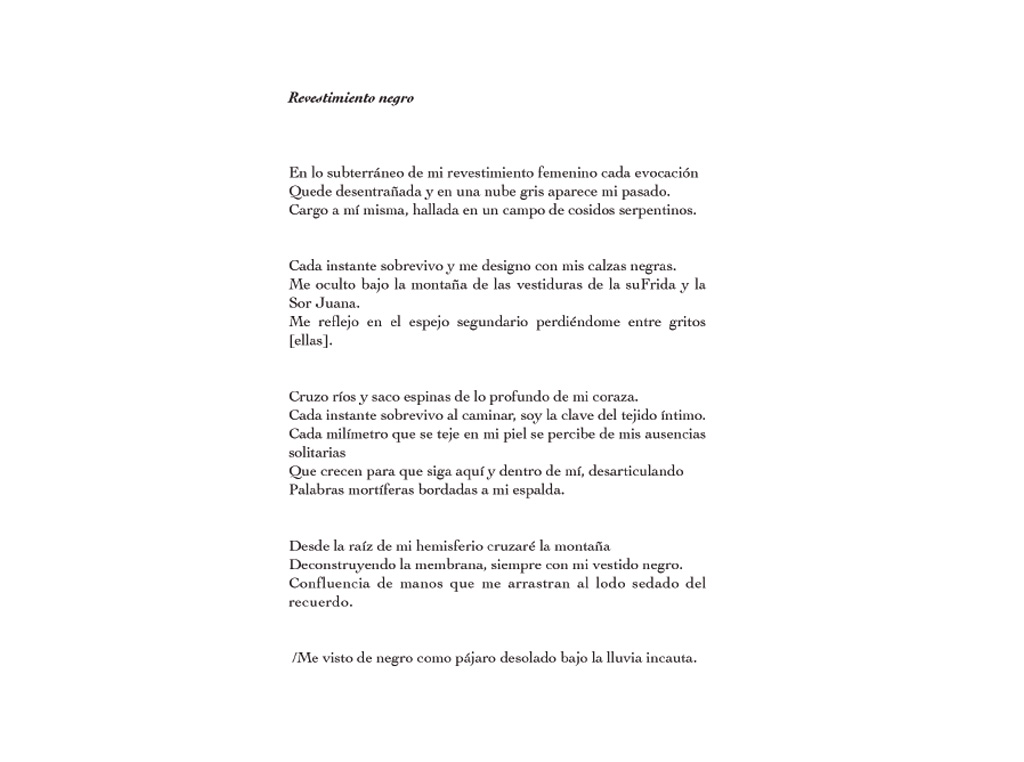


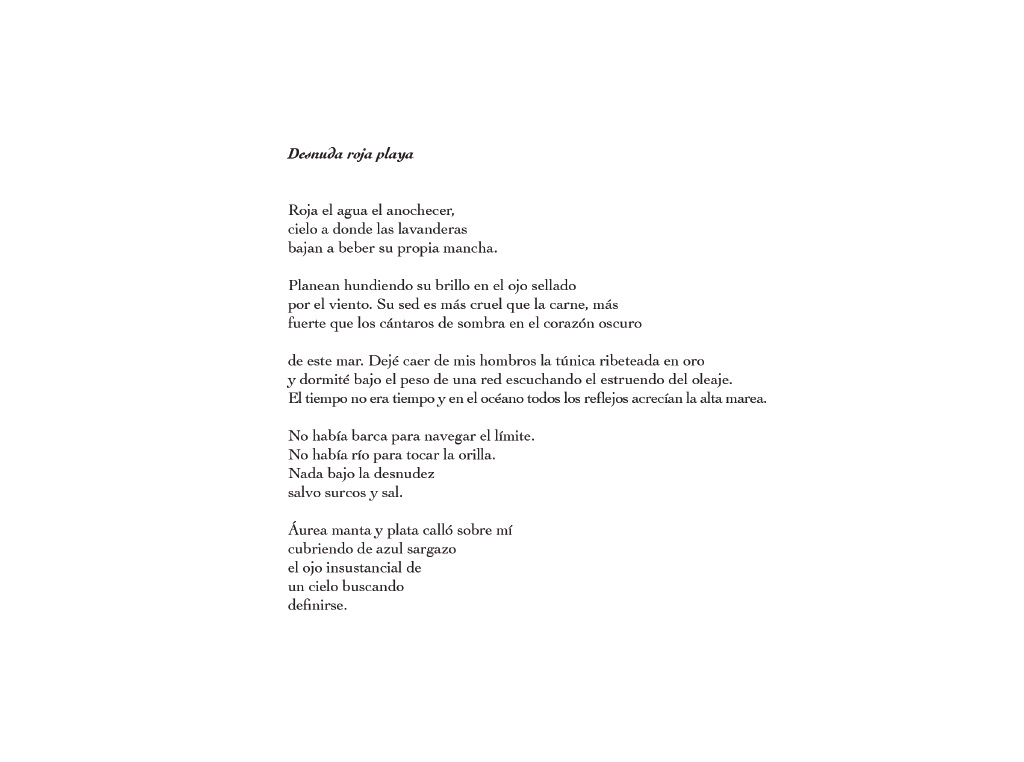


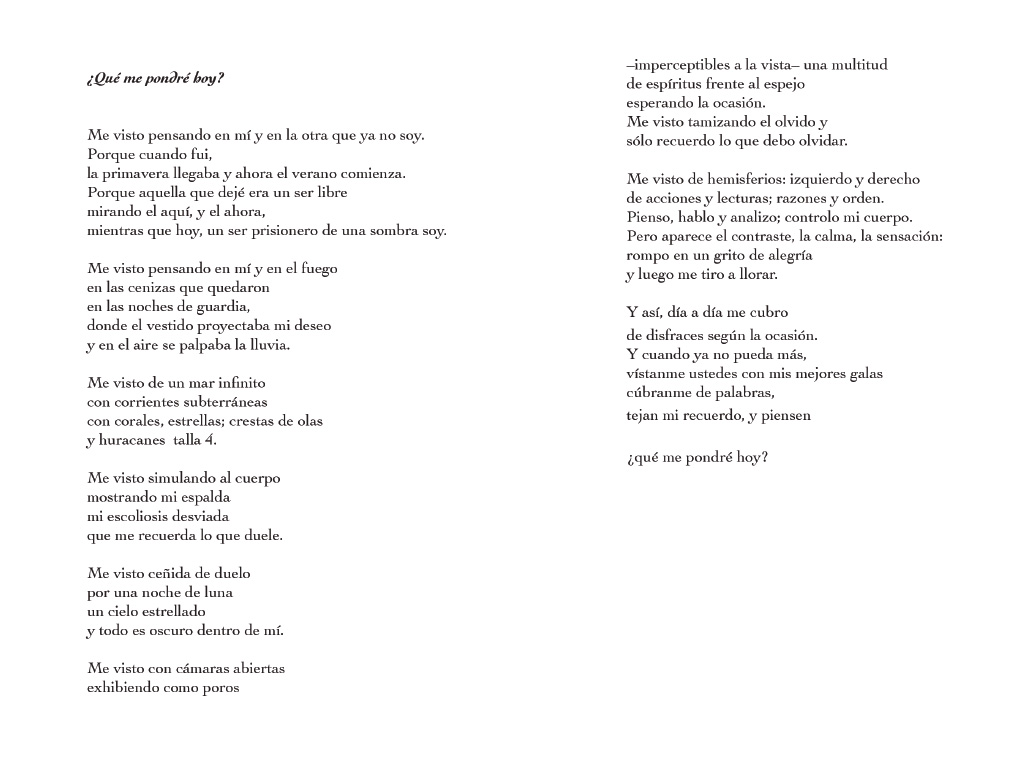


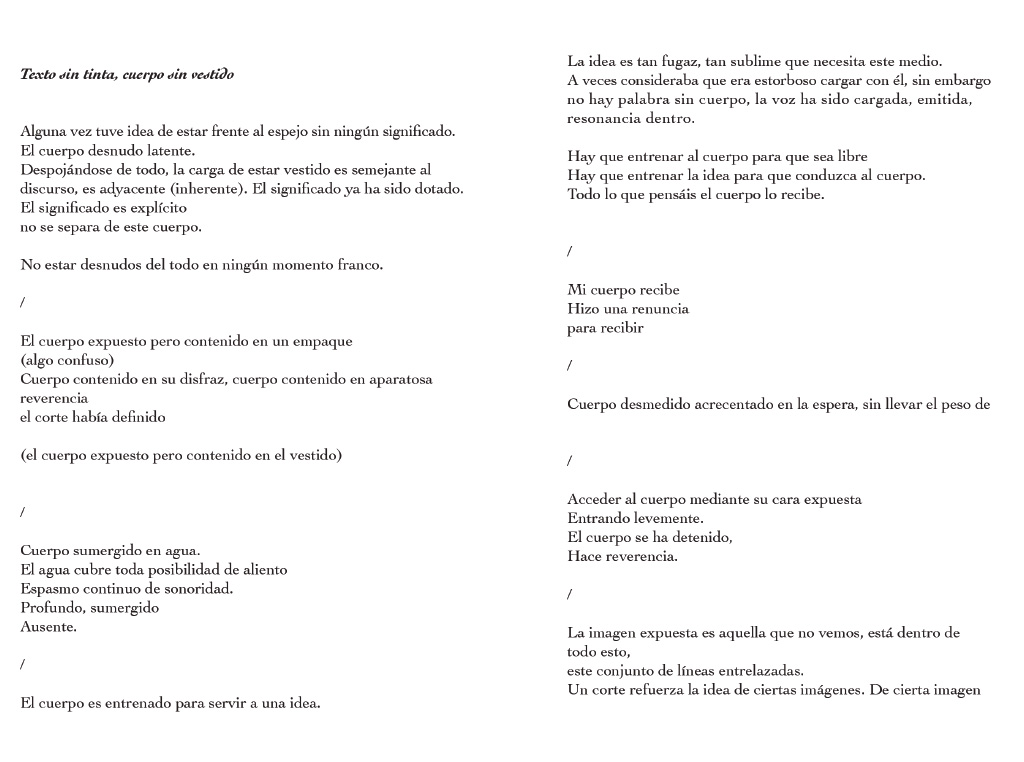


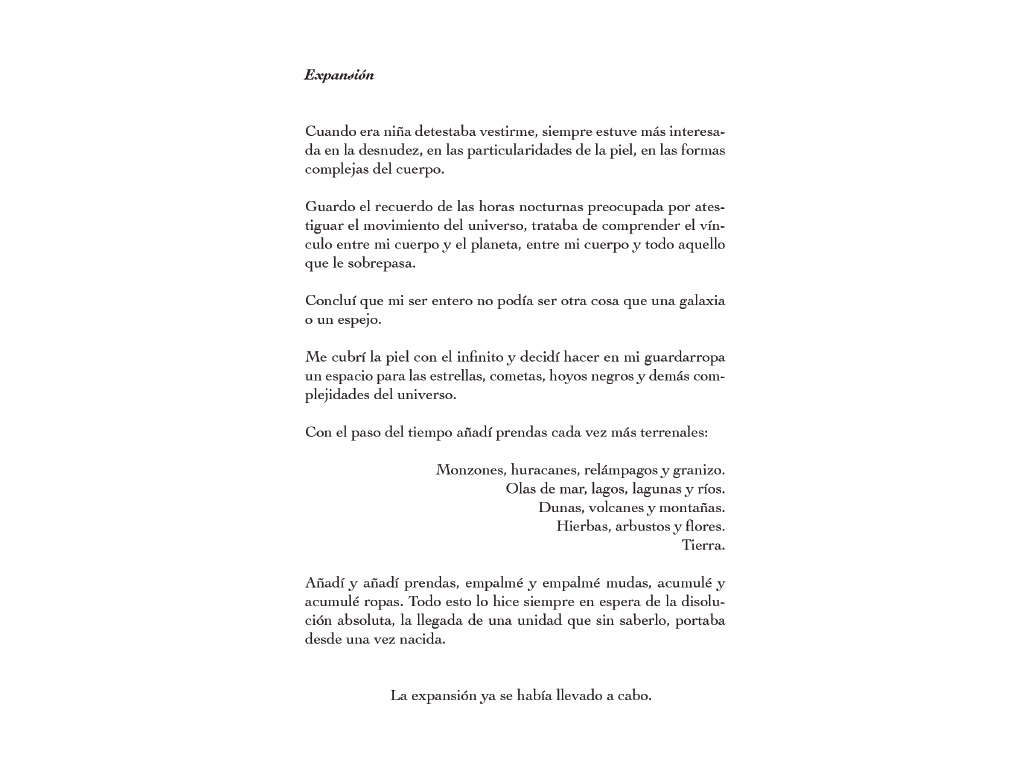


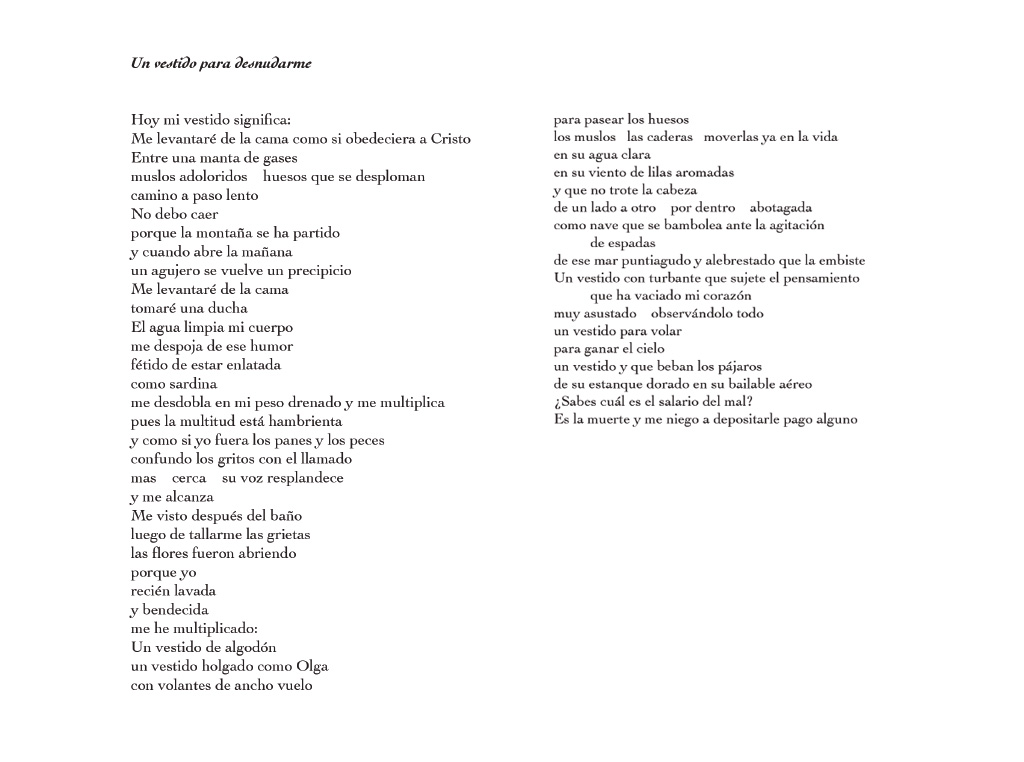


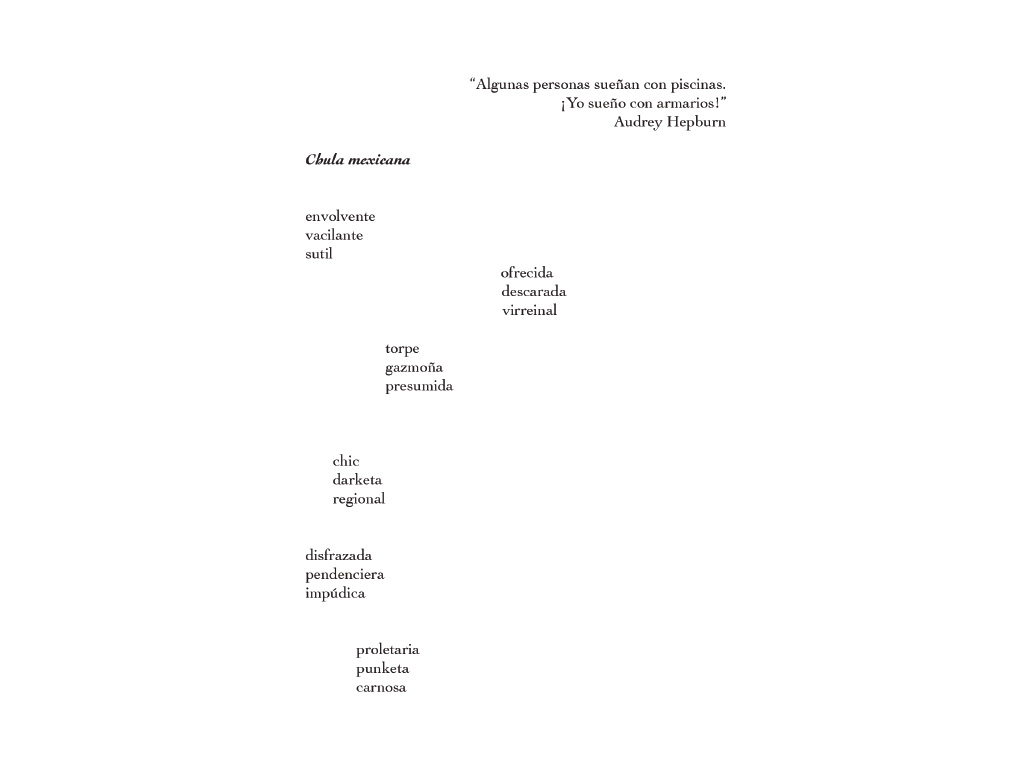

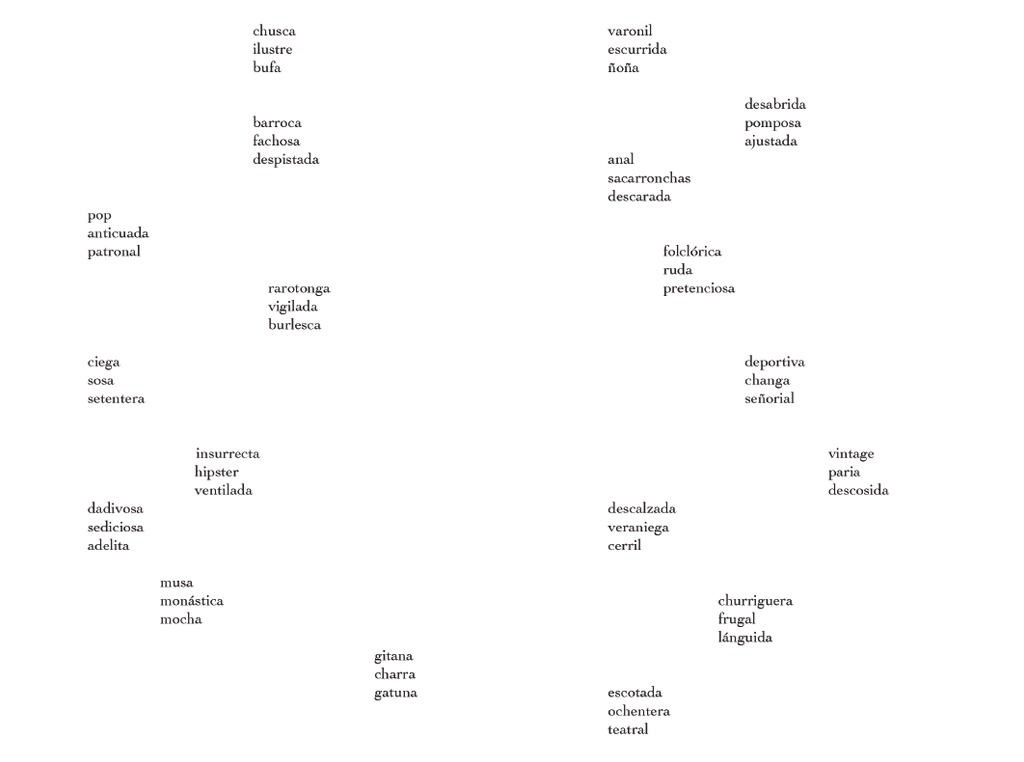


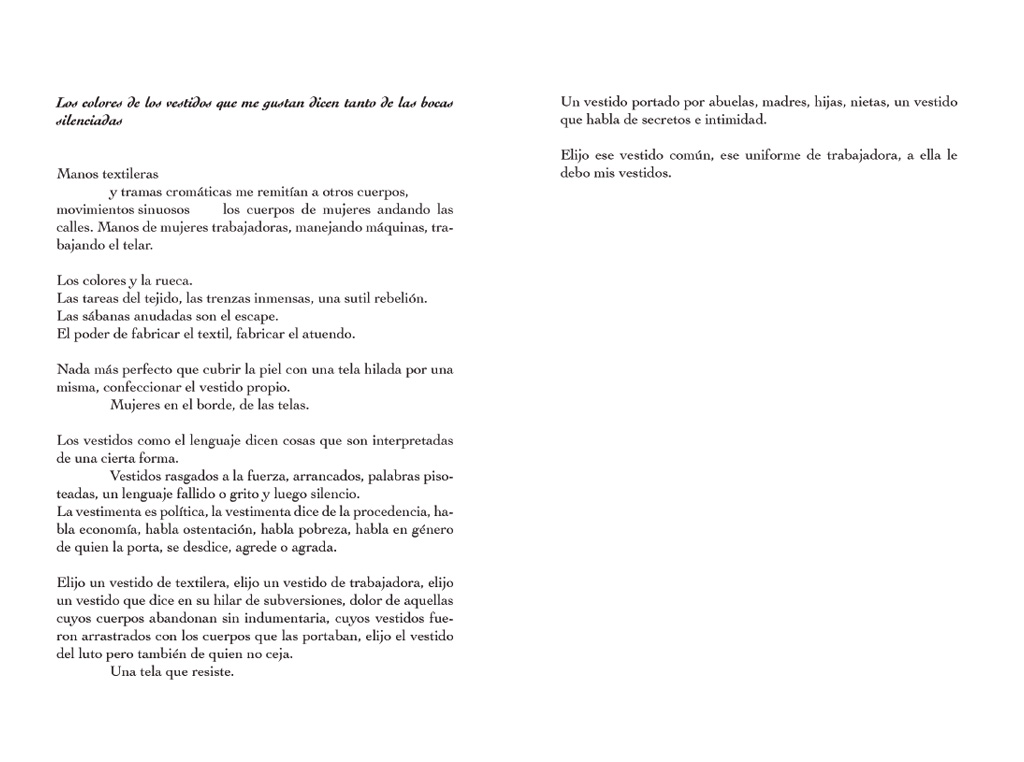


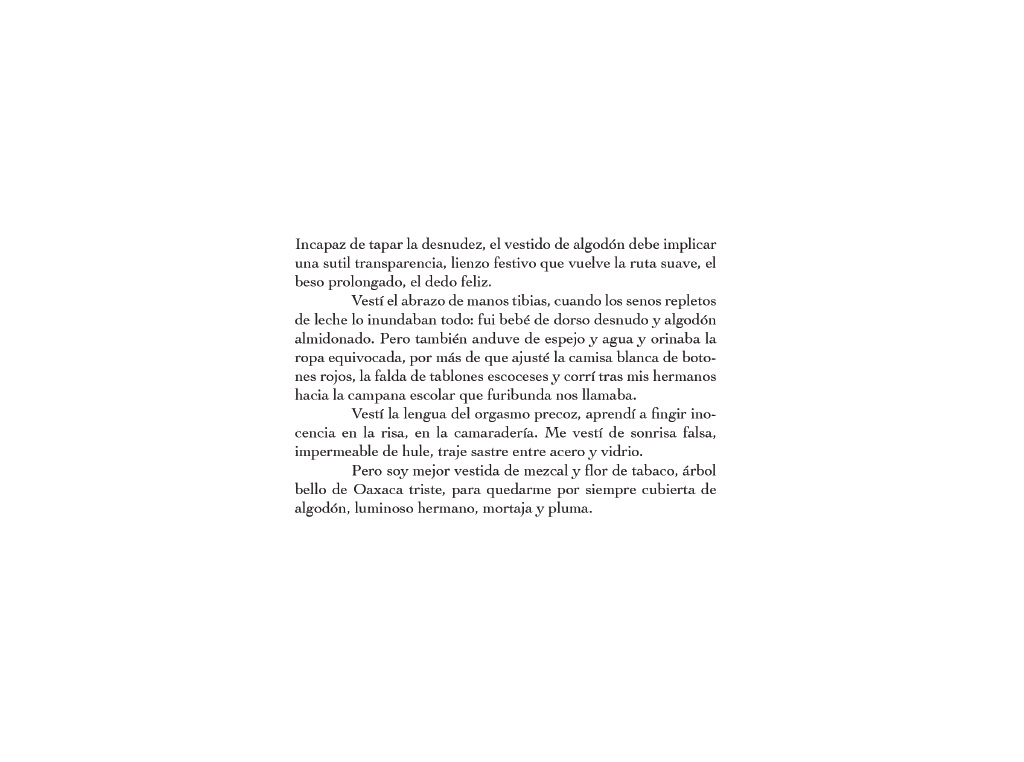


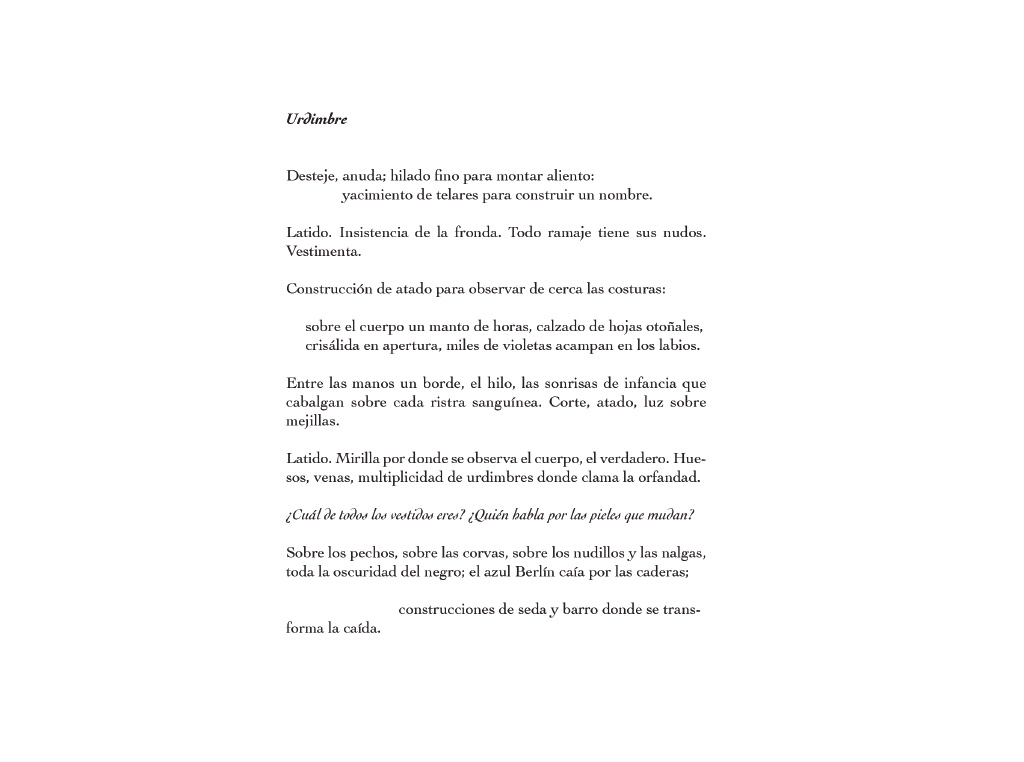


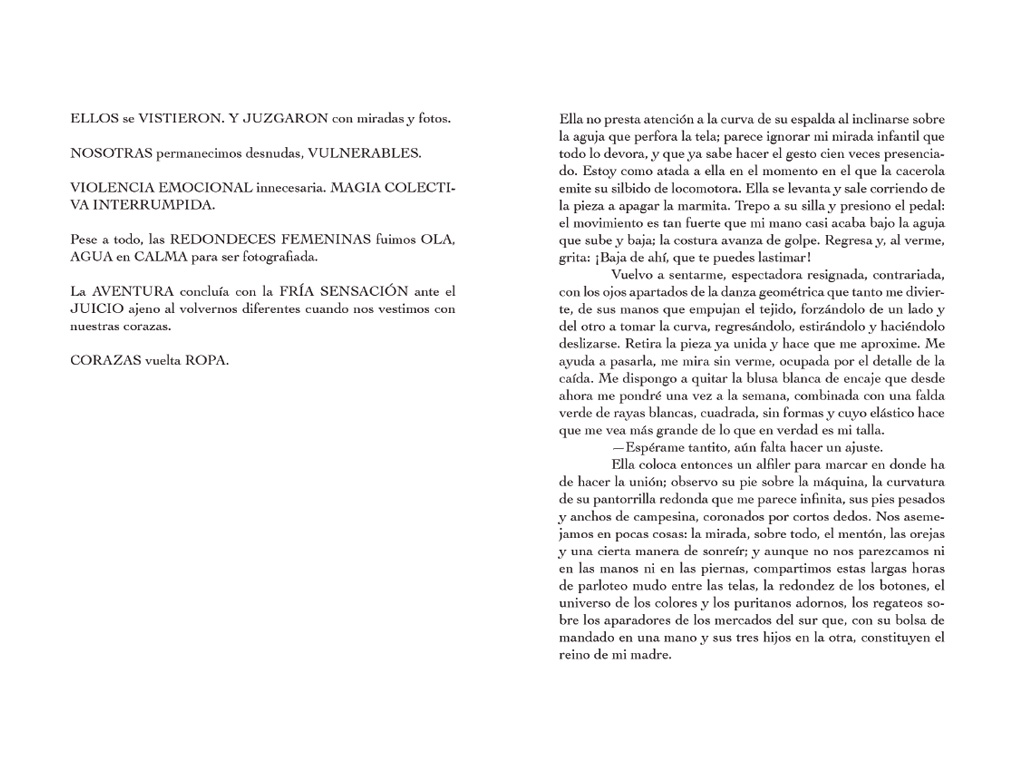

Text by Erick Vázquez
Miriam Medrez asked thirteen women writers about how dressing is a way for their skin to touch the universe. Based on their answers she has designed dress sculptures whereby the poets’ multiple experiences are cocooned in her work in every regard: the entire social, political, and economic dimension of the garments covering us, the results of thousands of peoples’ work; touched by hundreds of thousands of hands, with the sole purpose of covering our skin. All the formative experiences of childhood are locked in our body, which remembers how small it once was; events from the past linger in the skin’s experience. In a desperately romantic gesture, some people have referred to this as “genes”, the mystery of the word and its relationship with the body.
What is the word? We can that in more innocent times, it was a single, indivisible thing, before writing, when the Earth was virgin, when the voice that named things was indistinguishable from song and magic and even what we now clumsily call poetry. A single word which, before the cradle of civilization, was known discreetly as rhapsody. Rhapsody is a voice speaking in a langue promiscuously classified as Indo-European, literally translated into Spanish as the sewing together of songs, to refer to the action of folding one song into another until a canvas has been formed. What is the body? Our ancestors’ first act upon opening their eyes and discovering their nakedness was to get dressed. They sewed together grape leaves and covered their sexes as a reaction to their first feelings of shame. Since then, shame has been nothing more than the awareness of our own bodies, our own existence. This daily moment of nudity prepares us to experience the world and is tantamount to our primordial awareness of our own solitude, our certainly that we are alive. It is no coincidence that the poets Miriam invited to take part in this project responded to the act of getting dressed as a form of suffering that is very close to pleasure, gratification indistinct from affliction, since dressing is a practice of revealing ourselves to others, repeatedly, almost a rebirth each morning before having breakfast and going forth to cope with our work and days and beginning to talk about the usual things with our usual acquaintances.
What is sculpture? Every sculptor has their own response to the enigma of the body, and on this occasion, Miriam’s response is encyclopedic . She seems to be saying: Bodies only seem solid because of the illusion of the consistency of the flesh, but in fact, bodies are fluid. They take the shape of a vessel created by the words established in our childhood routines and embarrassment. They are woven of the meanings we wear as a dress under the nakedness of our shapeless souls. We need our mother’s, lovers’, children’s and friends’ hands, as if we were overly soft clay. It is a typically tender and cruel maternal gesture to protect the intimacy of writing only to reveal it later. These dresses are anything but armor, and yet they provide robust protection. Through this collection, Miriam Medrez demonstrates the mastery of her trade in the formal complexity of a concept in no uncertain terms.
Photography of the dresses: Roberto Ortiz Giacomán
Digital Photography Processes: Carmen Roel